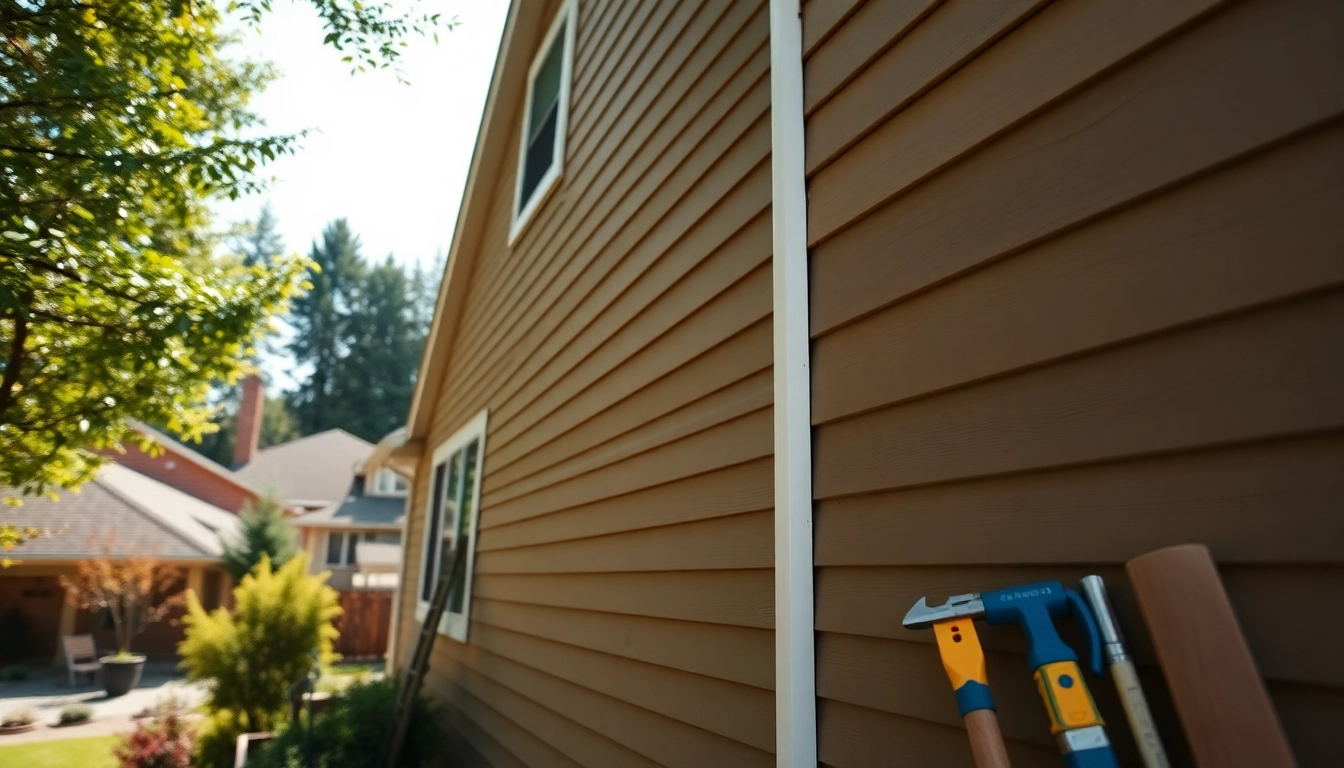Understanding Siding Replacement Portland Oregon
Siding replacement is an essential aspect of home maintenance that can greatly enhance the appearance and longevity of your house. In the rainy climate of Portland, Oregon, maintaining your home’s exterior is paramount. Ensuring your siding is intact protects your home from moisture and weather damage, while also contributing to its aesthetic appeal. If you’re considering Siding Replacement Portland Oregon, you are in the right place. This guide will help you understand the different types of siding available, the benefits of replacement, the factors to consider, and the overall replacement process.
What is siding replacement?
Siding replacement involves the removal of your existing siding material and the installation of a new material. It is a significant renovation project that can protect your home from environmental factors and improve its appearance and value. Different factors, including the material’s condition, energy efficiency, and the aesthetic you desire, will dictate when it’s time to replace your siding.
Importance of siding in home protection
Siding serves as the first line of defense against harsh weather conditions, pests, and other environmental factors. Well-chosen siding not only contributes to aesthetic appeal but significantly impacts energy efficiency by regulating indoor temperatures and preventing moisture infiltration, which can lead to mold and structural damage. Properly maintained siding can even reduce your heating and cooling costs.
Benefits of siding replacement
Replacing your siding can come with numerous benefits:
- Enhanced Curb Appeal: New siding can dramatically improve your home’s exterior, making it more attractive and increasing its value.
- Improved Energy Efficiency: New materials often provide better insulation, reducing energy costs.
- Increased Durability: Modern siding materials are designed to withstand harsh weather conditions, requiring less maintenance over time.
- Eco-Friendly Options: Many new siding materials are made from sustainable resources and have a smaller environmental impact.
Types of Siding Materials for Portland Homes
Choosing the right siding material for your home is crucial, especially in the variable climate of Portland. Here are some of the most popular options:
Vinyl siding: Durability and cost-effectiveness
Vinyl siding is one of the most widely used materials in the U.S., valued for its affordability and low maintenance needs. It is highly durable, resistant to moisture, and offers a variety of colors and styles. Furthermore, vinyl siding does not require painting, making it an appealing choice for many homeowners.
Hardie board: Versatile and resilient
Hardie board, or fiber-cement siding, is known for its robust resistance to fire, pests, and severe weather. It can mimic the appearance of wood while offering lower maintenance and longer lifespan. Many homeowners appreciate this option for its versatility in design and superior protection.
Wood siding: Aesthetic appeal and maintenance considerations
Wood siding offers a classic, appealing look for traditional homes. It provides natural insulation and can be painted or stained in various colors. However, wood siding requires regular maintenance, including painting and sealing, to prevent rot and insect damage, especially in wet climates like Portland.
Factors to Consider When Choosing Siding
When deciding on siding replacement, several factors should influence your decision:
Climate considerations for siding selection
Portland experiences a unique climate, characterized by significant rainfall and moderate temperatures. Selecting materials that resist moisture and withstand potential mold growth is crucial. Additionally, materials that are resistant to fluctuations in temperature can provide further longevity.
Budgeting for siding replacement projects
Understanding your budget is essential. Different materials come with different costs not only for the materials themselves but also for installation. It’s important to account for potential additional expenses such as repairs to underlying structures or necessary permits.
Local building codes and regulations
Portland has specific building codes that must be adhered to during any renovation, including siding replacement. It’s advisable to check with local authorities or a knowledgeable contractor to ensure your project complies with all regulations to avoid complications.
Steps Involved in the Siding Replacement Process
The process of siding replacement involves several key steps:
Initial assessment and planning
The first step is to inspect your current siding and determine whether a full replacement is necessary or if repairs can suffice. A professional contractor can provide a thorough assessment, including checking for underlying damage that may need immediate attention. Planning also involves deciding on materials and styles that suit your vision and budget.
Choosing the right contractor for installation
Hiring an experienced contractor is crucial. Look for someone with a strong track record in siding replacement and positive reviews from previous customers. A reliable contractor will also help navigate building codes, order the correct materials, and carry out the installation efficiently.
Post-installation tips for maintenance and warranty
Once your new siding is installed, maintaining it properly will ensure its longevity. Regular inspections for wear and tear, debris removal, and prompt repair of any damages can prolong the life of your siding. Additionally, understand your warranty terms for your chosen materials to know what is covered in case of issues.
Cost Factors in Siding Replacement Portland Oregon
Understanding the costs associated with siding replacement is key to effective budgeting.
Average costs and pricing trends
The cost of siding replacement can vary significantly based on material choice, the size of your home, and labor costs. On average, homeowners can expect to pay anywhere from $5,000 to $15,000, depending on these factors. Some trends indicate a growing preference for more sustainable and durable materials, which may come at a higher initial cost but offer savings in maintenance and energy over time.
Impact of material choice on overall costs
Material choice significantly impacts not only the initial installation costs but also long-term maintenance and energy savings. High-quality materials may have a higher upfront cost but can lead to lower energy bills and less frequent replacement cycles.
Financing options for homeowners
For many homeowners, financing options can make siding replacement more accessible. Look into personal loans, home equity lines of credit, or contractor financing plans. Assessing your options carefully can help align your financial strategy with your home improvement goals.
